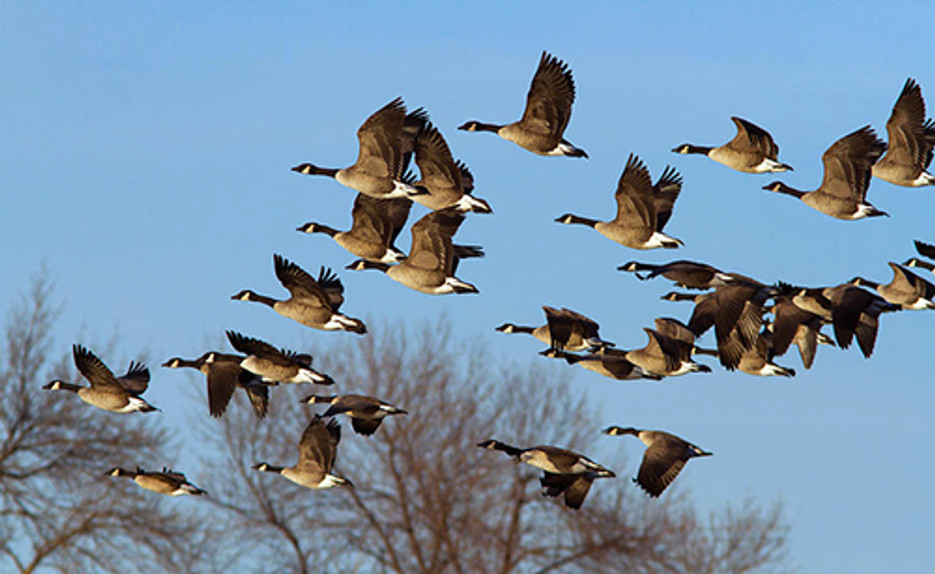Interesting Facts About Canada Geese
Canada Geese are native to North America. They breed in Canada and the northern United States in a variety of habitats. It’s no secret that populations of these birds have been multiplying over the last decade. One reason for this is their protected status by both Federal and State agencies. National bird control experts estimate there are at least a dozen subspecies of Canada Geese, ranging in size from 22 to 48 inches long and weighing from 3 pounds to 24 pounds.
Where You’ll Find Them
In recent decades, Canada Geese have adopted the easy living conditions of urban environments, preferring to nest in elevated areas near bodies of water, such as streams, lakes and ponds. This is partially due to the increasing scarcity of natural predators and an abundance of safe, man-made bodies of water—such as on golf courses, public parks, beaches, and in planned communities.
Aggressive with Children and Small Pets
Canada Geese are very aggressive and will chase animals and people—sometimes frightening children and smaller pets at parks. A gaggle of Canada Geese recently held a family hostage in their home for about an hour. Nearly 20 Canada Geese invaded the family's front yard, and at least 50 more were gawking around in the back yard. The geese were wandering through rosebushes, pecking around the yard and leaving mounds of droppings all over.
Damaging, Trampling and Defecating
Trampling, defecating and eating, Canada Geese cause considerable damage to agricultural crops, golf course lawns, reservoirs, ponds, and green belts. The big birds leave large amounts of droppings, which are filled with bacteria. Canada Geese can also be very noisy in large numbers. The geese can damage agricultural crops, denuded green belts and golf course lawns, and foul reservoirs and ponds.
Stubborn and Difficult to Move
As many bird control pros have noted, non-migratory Canada Geese are stubborn and difficult to move. They lay their eggs in shallow depressions lined with plant material and down. Once they settle in with their young, it’s hard to remove them since they are a protected bird. Lethal goose repellents cannot be used to deter them and their eggs cannot be disturbed.
Danger to Airports
Canada Geese roosting in open areas near airports have been known to create potentially dangerous bird strike collisions. The Federal Aviation Administration logged 11,000 wildlife strikes at 650 airports nationwide in a single year. These dangerous collisions occur when geese are sucked into jet engines or impact aircraft props. An airport official said thousands of birds migrate near airports that include farm fields, creeks and ponds at nearby city wastewater treatment plants.
Expert Assistance
If you’re unsure about which bird deterrents/repellents would work best to remove Canada Geese, Bird B Gone has over 80 years of combined experience in the field of bird control. We can help you with product selection, installation and cleanup. Just call us at (888) 570-0360 for a catalog, pricing, or product samples or email us at nobirds@birdbgone.com. We also work with a network of authorized installers, call today for a trained bird control professional in your area.

